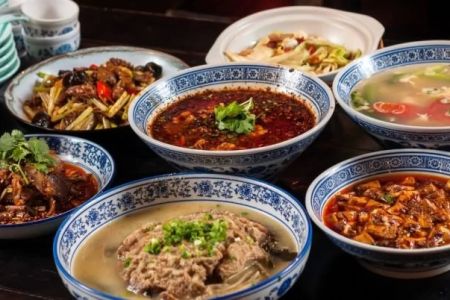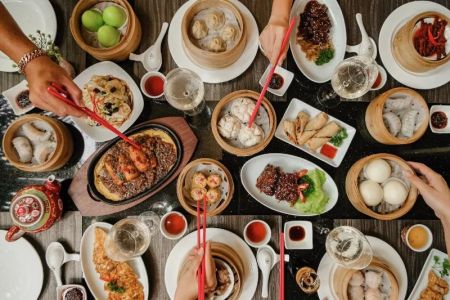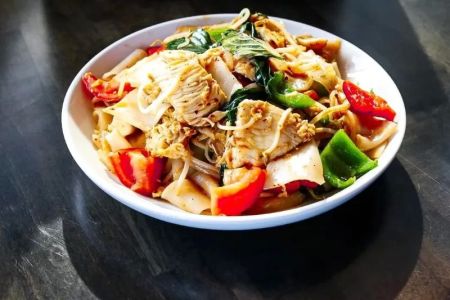- 1-Importance-of-Chinese-Food-Allergen-Awareness-Training-USA
- 2-Unique-Allergen-Risks-in-Chinese-Cuisine
- 3-Key-Components-of-Effective-Allergen-Training
- 4-Real-Life-Examples-Demonstrating-Training-Benefits
- 5-Challenges-in-Implementing-Allergen-Awareness-in-Chinese-Restaurants
- 6-How-to-Access-the-Best-Allergen-Training-Resources
1. The Importance of Chinese Food Allergen Awareness Training in the USA
Food allergies pose serious health risks in the United States, with millions affected by potentially life-threatening allergic reactions. Within the diverse landscape of American dining, Chinese cuisine is especially popular, yet it presents unique allergen challenges that necessitate specialized awareness training. Chinese food allergen awareness training in the USA is a critical component in ensuring food safety for customers and protecting restaurants from legal and reputational risks.
Given the complexity of Chinese recipes, which often combine numerous ingredients such as soy, peanuts, shellfish, and wheat, an effective allergen awareness program helps kitchen and service staff recognize hidden allergens and communicate clearly with patrons. This training fosters a safer dining experience and aligns with food safety regulations increasingly emphasized across states.
Chinese Food allergen training in the USA empowers restaurant teams to prevent cross-contact, manage ingredient substitutions responsibly, and respond promptly to allergen-related emergencies. This not only safeguards consumers but also builds trust and loyalty, crucial in the highly competitive food industry.
2. Unique Allergen Risks in Chinese Cuisine
Chinese cuisine includes a variety of ingredients known to cause allergic reactions. Soy sauce, a staple in many dishes, contains wheat and soy, two of the top food allergens in the U.S. Additionally, dishes may include peanuts, tree nuts, shellfish such as shrimp and crab, eggs, and sesame—each requiring careful handling.
The use of shared cooking surfaces, woks, and oils in Chinese kitchens raises the risk of cross-contact, where allergens unintentionally transfer from one dish to another. For example, a popular dish like Kung Pao Chicken contains peanuts, which can contaminate other dishes if proper precautions aren’t taken.
Moreover, the complexity of traditional sauces and broths, often prepared in bulk, can hide allergenic ingredients, making it difficult for staff without proper training to identify allergen content. Understanding these unique risks is vital to developing targeted allergen awareness training that addresses the realities of Chinese food preparation.
3. Key Components of Effective Allergen Training
Effective Chinese food allergen awareness training in the USA must go beyond basic information. It should include:
- Detailed Ingredient Knowledge: Educating staff on common allergens in Chinese cuisine, including soy, peanuts, shellfish, wheat, and sesame.
- Cross-Contact Prevention: Best practices for cleaning, ingredient storage, and kitchen workflow to avoid allergen contamination.
- Communication Skills: Training front-of-house staff to ask the right questions and provide accurate information to customers with allergies.
- Emergency Response: How to recognize symptoms of allergic reactions and respond quickly, including the use of epinephrine when available.
- Compliance with Regulations: Awareness of local and federal food safety laws related to allergen disclosure and labeling.
Integrating interactive sessions, real-life scenarios, and continuous refreshers ensures training remains effective and relevant.
4. Real-Life Examples Demonstrating the Benefits of Allergen Training
Consider the case of a Chinese restaurant in California that faced a severe allergic reaction incident. Prior to implementing comprehensive allergen awareness training, the staff was unaware of cross-contact risks, leading to a customer’s hospitalization due to peanut exposure. Following this event, the restaurant partnered with food safety experts to develop a tailored allergen training program focused on Chinese cuisine.
The result was a significant reduction in allergen-related complaints and a boost in customer confidence. Employees reported feeling more empowered and capable of handling allergy inquiries, which translated into better customer service and fewer legal risks.
Another example involves a family-owned restaurant in New York that used allergen training to expand their customer base by promoting allergy-safe menu options. By training staff and clearly labeling dishes, they attracted customers with allergies who previously avoided Chinese food due to safety concerns. This illustrates how proper allergen awareness training not only protects health but also supports business growth.
5. Challenges in Implementing Allergen Awareness in Chinese Restaurants
Despite its importance, implementing allergen awareness training in Chinese restaurants faces several challenges. Language barriers often make training delivery difficult in kitchens staffed by non-English speakers. Additionally, the fast-paced nature of Chinese restaurant kitchens can make strict allergen protocols hard to maintain.
Another challenge is the traditional use of shared cooking utensils and preparation areas, which requires cultural and operational shifts to reduce cross-contact risks. Cost concerns can also deter smaller establishments from investing in comprehensive training programs.
Overcoming these challenges involves adopting multilingual training materials, engaging management in fostering a food safety culture, and highlighting the long-term cost benefits of preventing allergen incidents compared to potential lawsuits or reputational damage.
6. How to Access the Best Allergen Training Resources
For Chinese restaurants and foodservice providers in the USA seeking high-quality allergen awareness training, reliable resources are available. Online platforms offer courses tailored specifically to allergen risks in ethnic cuisines, including Chinese food. These programs combine regulatory guidance, practical tips, and interactive tools to ensure deep understanding.
Moreover, professional consultants and organizations specializing in food safety can provide customized training sessions, audits, and ongoing support. For those interested in both allergen safety and authentic Chinese cuisine, Chinese Food offers comprehensive products and services that include training recommendations suited for diverse kitchen environments.
Investing in proper allergen awareness training not only protects customers but also enhances a restaurant’s reputation and operational efficiency. It represents a proactive step toward responsible foodservice in today’s allergen-conscious market.







